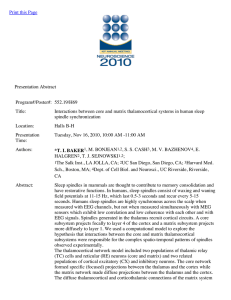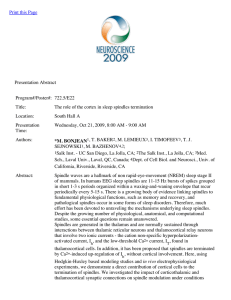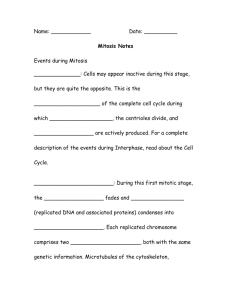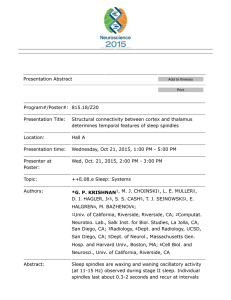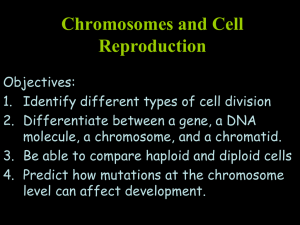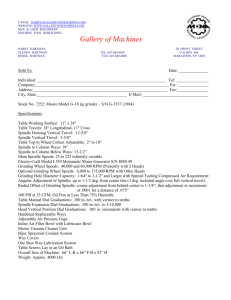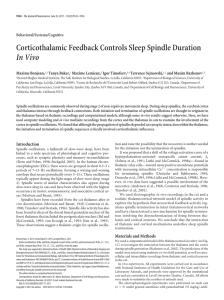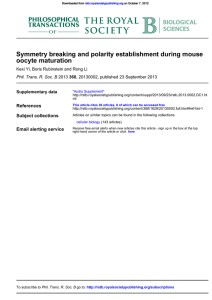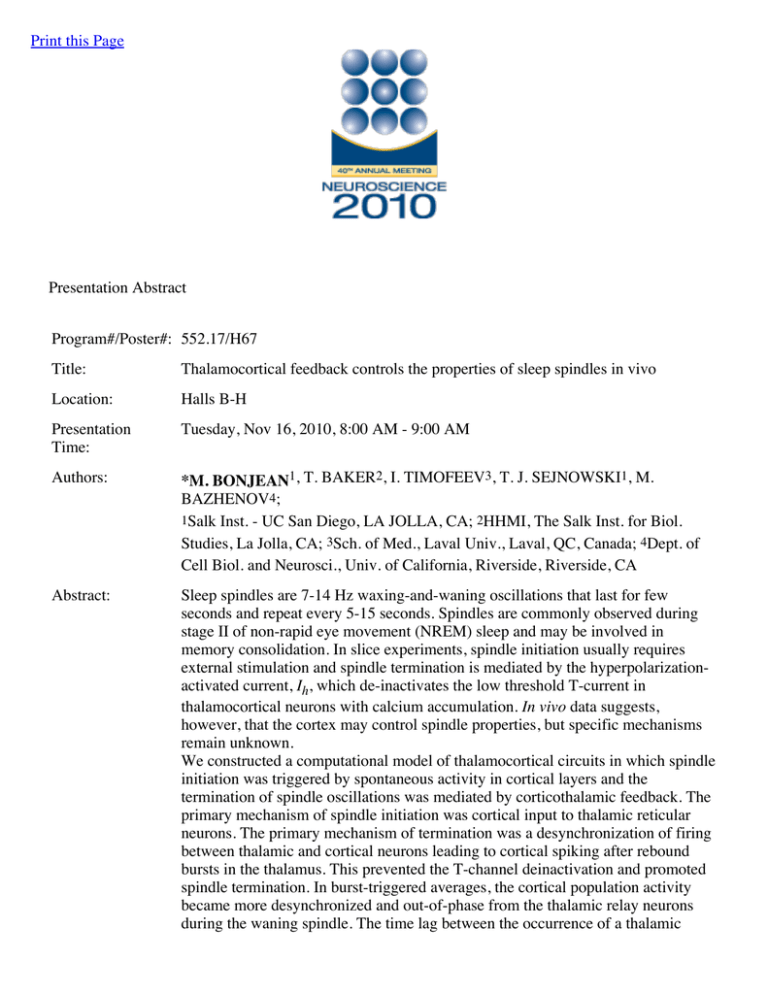
Print this Page
Presentation Abstract
Program#/Poster#: 552.17/H67
Title:
Thalamocortical feedback controls the properties of sleep spindles in vivo
Location:
Halls B-H
Presentation
Time:
Tuesday, Nov 16, 2010, 8:00 AM - 9:00 AM
Authors:
*M. BONJEAN1, T. BAKER2, I. TIMOFEEV3, T. J. SEJNOWSKI1, M.
BAZHENOV4;
1Salk Inst. - UC San Diego, LA JOLLA, CA; 2HHMI, The Salk Inst. for Biol.
Studies, La Jolla, CA; 3Sch. of Med., Laval Univ., Laval, QC, Canada; 4Dept. of
Cell Biol. and Neurosci., Univ. of California, Riverside, Riverside, CA
Abstract:
Sleep spindles are 7-14 Hz waxing-and-waning oscillations that last for few
seconds and repeat every 5-15 seconds. Spindles are commonly observed during
stage II of non-rapid eye movement (NREM) sleep and may be involved in
memory consolidation. In slice experiments, spindle initiation usually requires
external stimulation and spindle termination is mediated by the hyperpolarizationactivated current, Ih, which de-inactivates the low threshold T-current in
thalamocortical neurons with calcium accumulation. In vivo data suggests,
however, that the cortex may control spindle properties, but specific mechanisms
remain unknown.
We constructed a computational model of thalamocortical circuits in which spindle
initiation was triggered by spontaneous activity in cortical layers and the
termination of spindle oscillations was mediated by corticothalamic feedback. The
primary mechanism of spindle initiation was cortical input to thalamic reticular
neurons. The primary mechanism of termination was a desynchronization of firing
between thalamic and cortical neurons leading to cortical spiking after rebound
bursts in the thalamus. This prevented the T-channel deinactivation and promoted
spindle termination. In burst-triggered averages, the cortical population activity
became more desynchronized and out-of-phase from the thalamic relay neurons
during the waning spindle. The time lag between the occurrence of a thalamic
burst and the onset of a cortical spike increased during the waning part of the
spindle, leading to decreased synchronization. Increasing the cortical inhibition led
to longer spindle epochs in the thalamus (up to 42% longer when the cortical
inhibition doubled). Finally, thalamic populations were more synchronized at
spindle offset than at the onset when the cortical feedback was strong. In vivo
experiments revealed progressive decrease of synchronization between cortex and
thalamus during spindle, therefore, confirming the predictions of the
computational model. Furthermore, under ketamine-xylazine anesthesia, spindle
duration was significantly increased after decortications in agreement with the
proposed mechanism of cortical involvement to spindle termination. Through
regulation of spindle duration, the neocortex could affect cognitive and
pathological processes, including memory consolidation.
Disclosures:
M. Bonjean: None. T. Baker: None. I. Timofeev: None. T.J. Sejnowski:
None. M. Bazhenov: None.
Keyword(s):
NREM sleep
Spindles
Thalamocortical oscillations
Support:
NIH
CHIR
NSERC
Crick-Jacobs Center
HHMI
[Authors]. [Abstract Title]. Program No. XXX.XX. 2010 Neuroscience Meeting
Planner. San Diego, CA: Society for Neuroscience, 2010. Online.
2010 Copyright by the Society for Neuroscience all rights reserved. Permission to
republish any abstract or part of any abstract in any form must be obtained in
writing by SfN office prior to publication.

